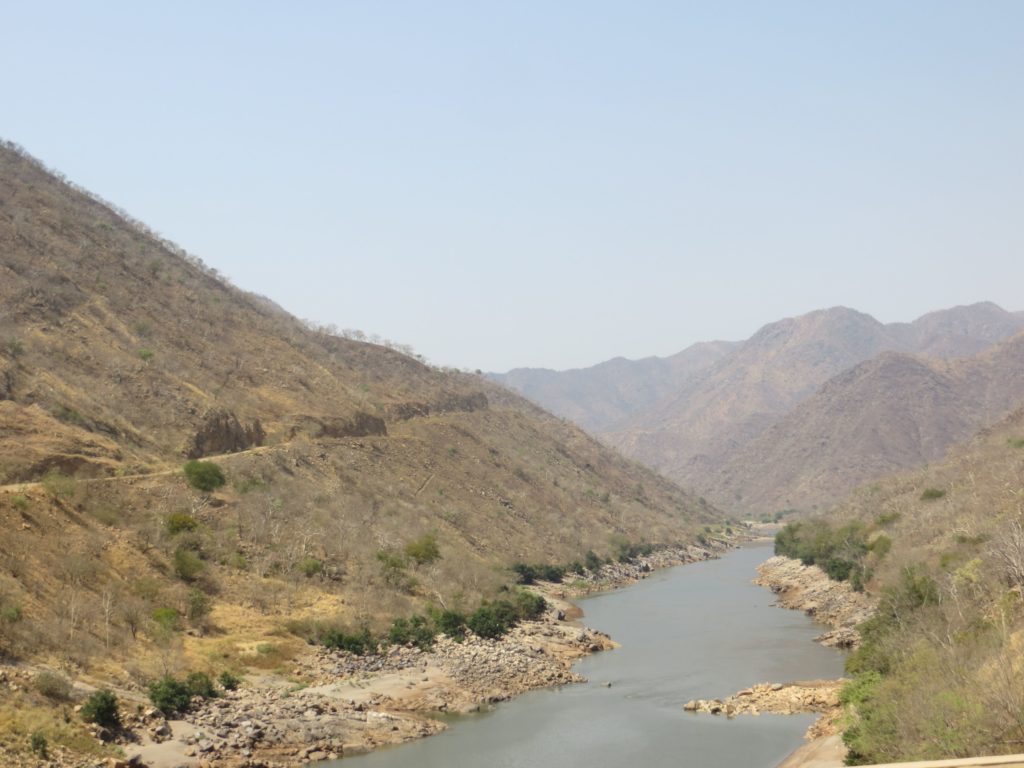Morgan Blades is just finishing her PhD at The University of Adelaide on the Tectonic Evolution of the Western Shield, Ethiopia. She has also worked on the Neoproterozoic evolution of Oman and the Sahara Metacraton. She is a rock enthusiast having wanted to be a geologist since she was very little.
Ethiopia is unique – culturally and historically, but it also holds an important position in the East African Orogen, a major Gondwana forming a collisional zone.
Ethiopians have a strong sense of identity and pride of their heritage, which is one of the first things that you notice when you go there to do fieldwork. The second thing you notice is the strong coffee culture. As the birthplace of the coffee plant, Ethiopians consume coffee as enthusiastically as they export it. Traditionally coffee is served in a clay pot over coals, in a little incense filled coffee shops – which was the perfect way to start each day in the field. In a convoy consisting of people from the University of Adelaide, the Ministry of Mines and the Geological Survey of Ethiopia we headed west, from the capital Addis Ababa, targeting fresh outcrop along the way to the Sudanese border at Kurmuk. Noticeably the outcrop becomes increasingly sparse, until the western borders of Ethiopia, which are dominated by granites and gneisses. These exposures are supposed to be Archaean in age and thought to provide the boundary between the arc terranes of the East African Orogen and the adjacent enigmatic Sahara Metacraton.
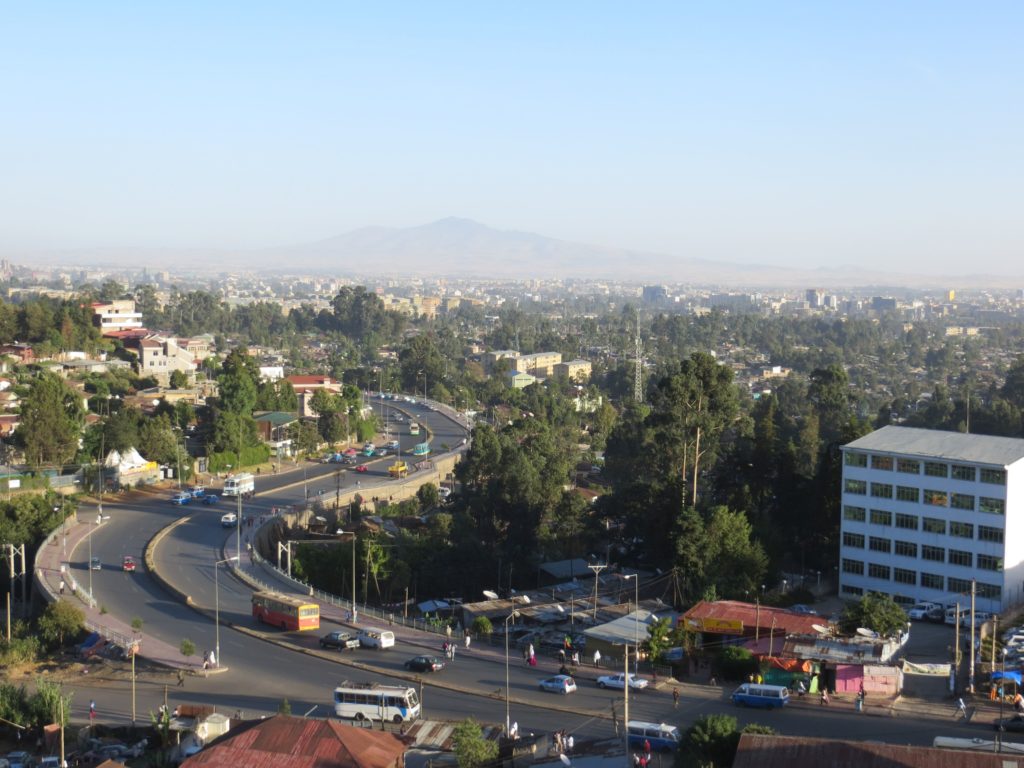
A view over the sprawling capital city of Ethiopia, Addis Ababa. In the distance, we can see one of the rift volcanoes bordering the city.
The East African Orogen is the world’s largest Neoproterozoic to Cambrian orogenic belt and it used to extend from Turkey and the Levant, in the north, to Mozambique, Madagascar, Sri Lanka and Antarctica in the south within the ancient supercontinent Gondwana. The orogen preserves a complex history of rocks formed in volcanic arcs during the subduction of the Mozambique Ocean—a huge ocean that separated Neoproterozoic India from Gondwanan Africa. The northern East African Orogen is called the Arabian Nubian Shield, and is made up of juvenile Neoproterozoic crust that is dominated by volcano-sedimentary rocks, plutons and ophiolitic remnants. To the south, is the Mozambique Belt, a tract of older continental crust, which was strongly deformed and metamorphosed in the Neoproterozoic/Cambrian. The Western Ethiopian Shield is one of the largest continuous tracts of outcrop and forms the interface between the ANS and Mozambique Belt, it holds a key position; vital in understanding the role of the East African Orogen in Gondwana formation. We were in Ethiopia to better work out the timing and nature of arc accretion in the Western Ethiopian Shield.
Geologically, this Western Ethiopian Shield is made up of a range of supra – crustal and plutonic rocks that formed in Neoproterozoic arcs. It is a metamorphic terrane, consisting of gneisses, metavolcanic and metasedimentary rocks with associated mafic–ultramafic intrusions and syn– to post–tectonic gabbroic to granitic intrusions. There have been many lithotectonic divisions proposed for the region, though simply these plutonic terranes are divided by a regional shear zone. The Baruda-Tulu Dimtu zone stretches through Ethiopia and connects with the Barka zone in Eritrea. On a broad scale, these regional shear-zones have generally been regarded as ophiolite decorated sutures, representing the major boundaries that separate different arc terranes that accreted during amalgamation of eastern and western Gondwana. Previously, it has been thought that the Western Ethiopian Shield contains remnants of older Archaean crust, seen on many geological maps. One of the aims was to try and date these older units to see if there was indeed some older sliver of continental crust.
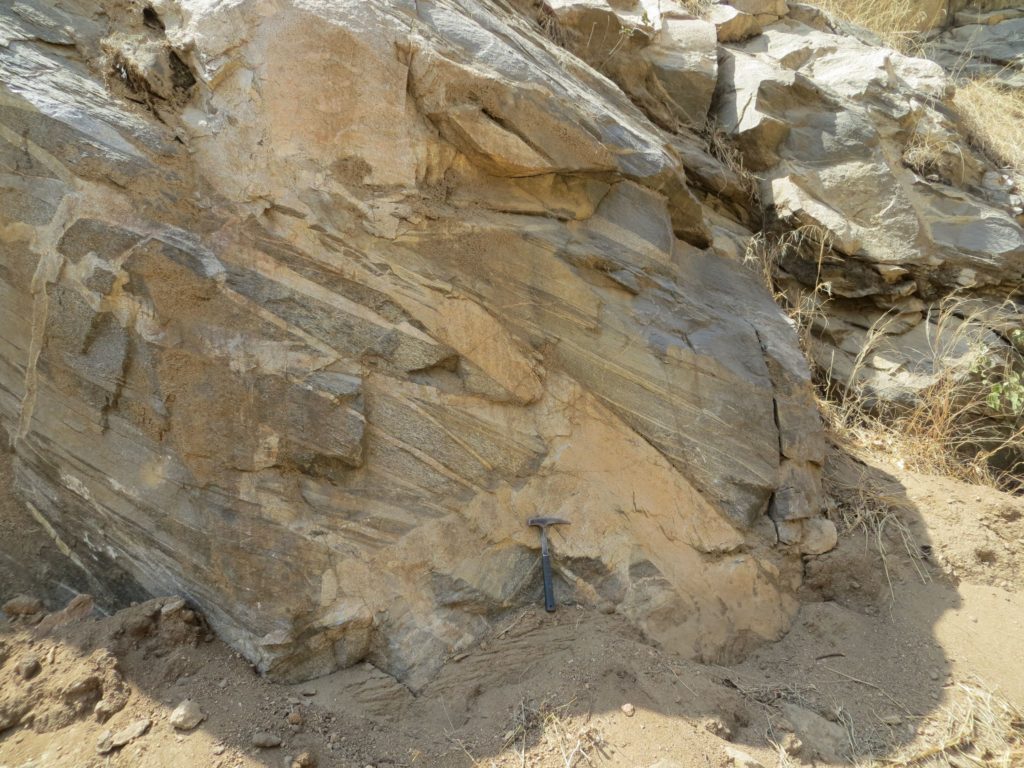
Outcrop on the slopes of the Blue Nile, showing a felsic granite intermingling with a mafic melt. The granite shows no deformation, suggesting these melts were coeval.
At the end of each day we were able to enjoy a traditional meal. Thanks to a large Ethiopian diaspora that has brought its restaurants to various countries around the world, many people have tasted Ethiopian food. Though what is served abroad is only a pale reflection of the real thing, critical parts just cannot be exported. A staple in every meal is injera, a sour flatbread, accompanied by various stews or even cubes of raw meat (if it is a special occasion). Finding teff, the ubiquitous grain of Ethiopia, fermenting it, and cooking the sour bread injera properly is nearly impossible outside Ethiopia.
As we headed back east from the western border country, we followed the Blue Nile or as the locals call it ‘Abay’, which is enclosed by a large gorge. Towards the town of Nekempte the gorge of the Blue Nile, is made up of ~620 Ma juvenile, K-Feldspar granites and felsic granites with intermingling mafic melts.
While looking at the geology, in the Nile River Gorge, you are never alone; the ever-curious baboons sit and watch from a far and the prehistoric looking Hornbills are enjoying the delights that the river has to offer. The Blue Nile has a long history, as a reflection of those who have made their livelihood from it, and those who were determined to rule it. In fact, the Ark of the Covenant is rumoured to have been stored on one of the Islands of Lake Tana. If you are lucky enough to be in Ethiopia in January you will be able to witness the Ethiopian Epiphany, the second biggest festival. The tablet (a replica of Ark of Covenant) is removed from every church in town and paraded around by priests dressed in colourful robes. All the towns in Ethiopia shut down and the roads are blocked as these colourful parades engulf the streets. Generally on these days progress is slow but culturally rewarding.
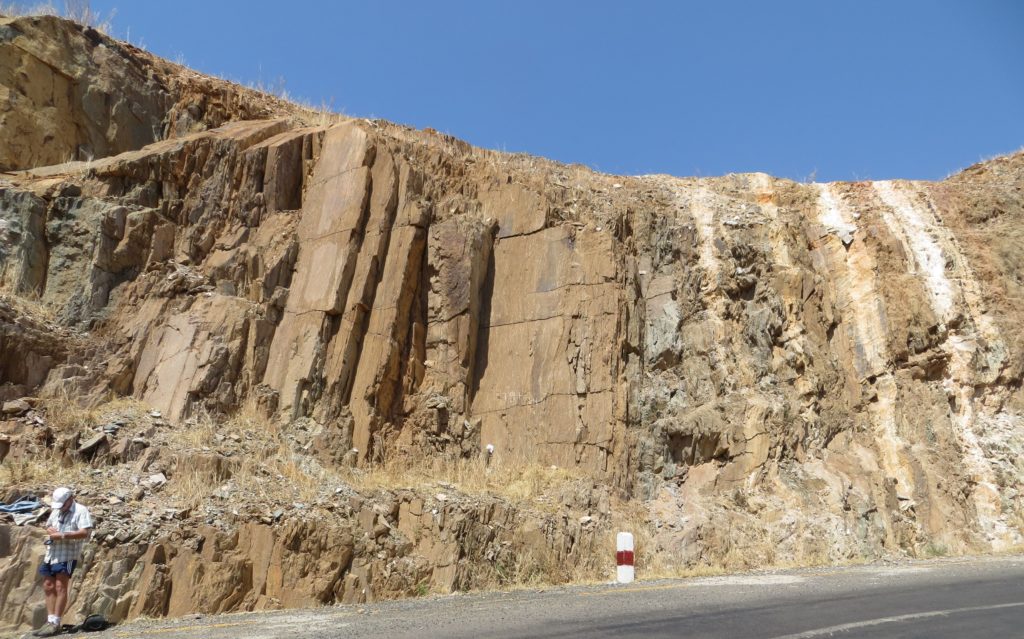
Road side outcrop 30 km from the town of Kurmuk and the Sudanese border. These well foliated granites, granodiorites and metasediments provide a great section to interpret the relationships between these units.
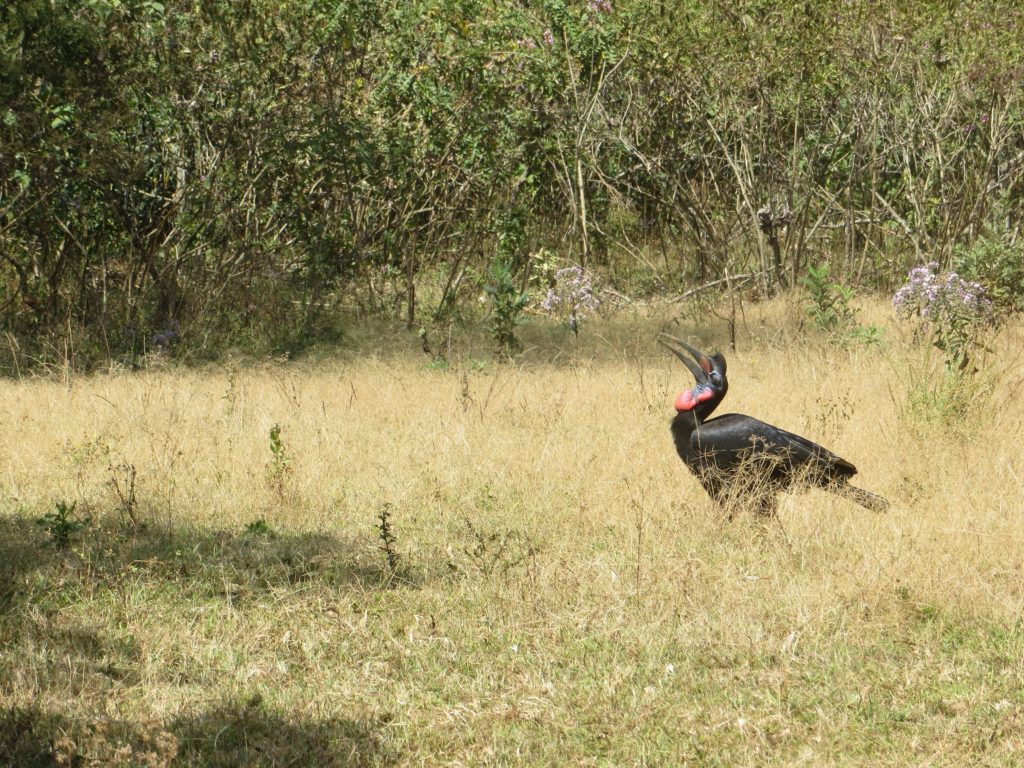
Abyssinian Ground Hornbill is endemic to sub – Saharan Africa and is only found in a belt from Senegal to Ethiopia.
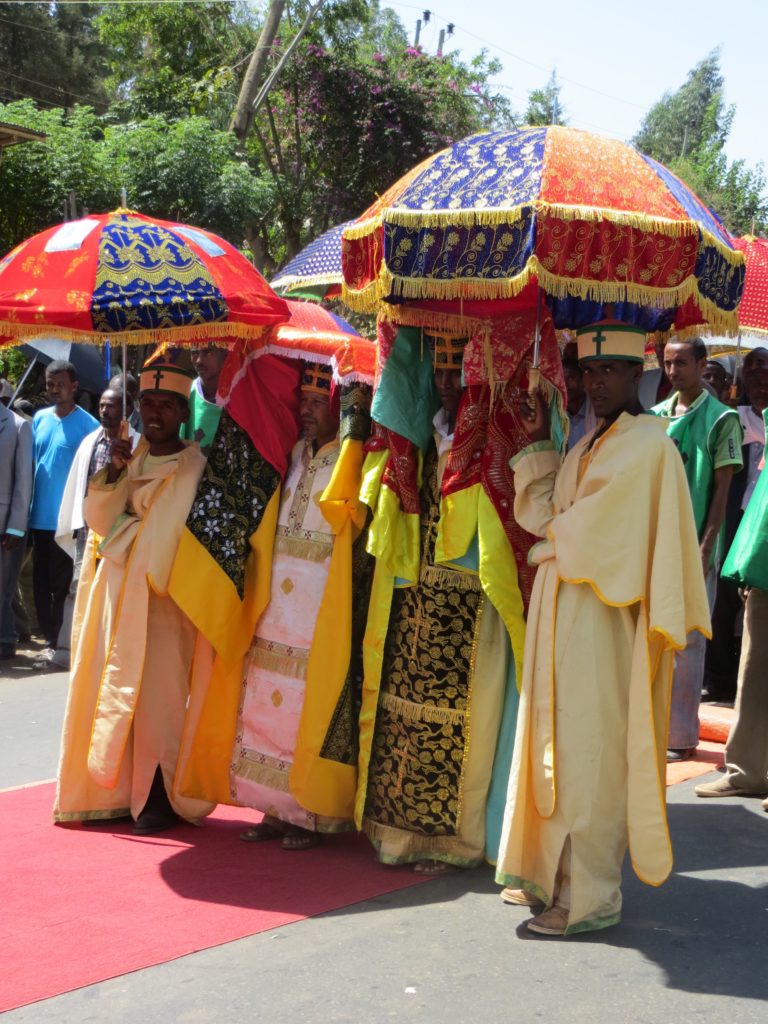
Ethiopian Epiphany (Timkat) is the Ethiopian Orthodox celebration that occurs in January. The Tabots (model of the Ark of the Covenant) are carried by the most senior priests of the community and completely covered as they are too sacred for anyone one to gaze at.
After a month in the field and a few flat tyres, we drove back into Addis Ababa, with 200kg of rocks in tow. We only one more hurdle to jump and that was to get the rocks out of the country and back to Australia. With the help of our fantastic Ethiopian team – two days and countless forms later, our rocks were on their way back to Adelaide University. These rocks were prepared for geochronology (U/Pb, Hf and O) and whole rock geochemistry and the data collected help relate the Western Ethiopian Shield to the Arabian Nubian Shield and the Mozambique Belt and better elucidate the nature and evolution of Neoproterozoic ocean plate tectonics.
Further reading on this work:
Blades, M.L., Collins, A.S., Foden, J.D., Payne, J.L., Xu, X., Aleumu, T., Woldetinsae, G., Clark, C., and Taylor, R. 2015. Age and Hafnium Isotopic Evolution of the Didesa and Kemashi Domains, Western Ethiopia. Precambrian Research, 270, 267-284.
![]() This work is licensed under a Creative Commons Attribution-NonCommercial-ShareAlike 4.0 International License.
This work is licensed under a Creative Commons Attribution-NonCommercial-ShareAlike 4.0 International License.

